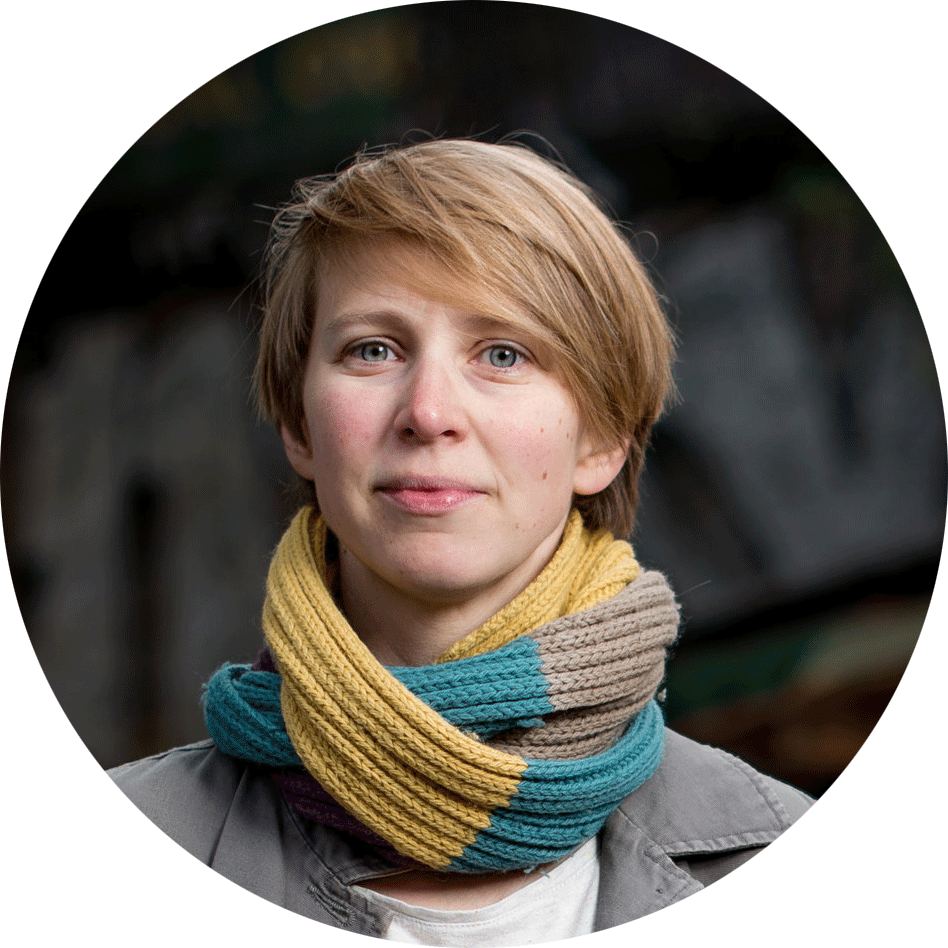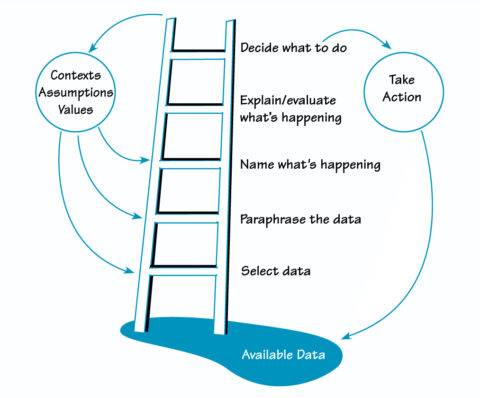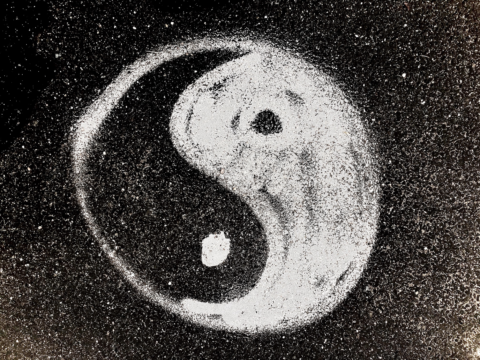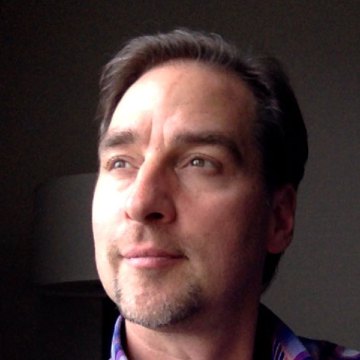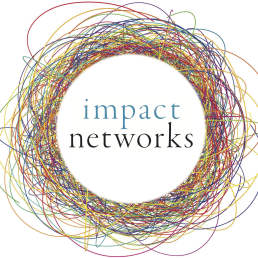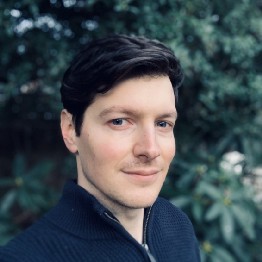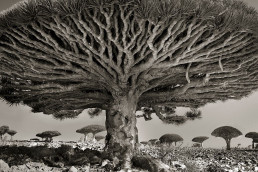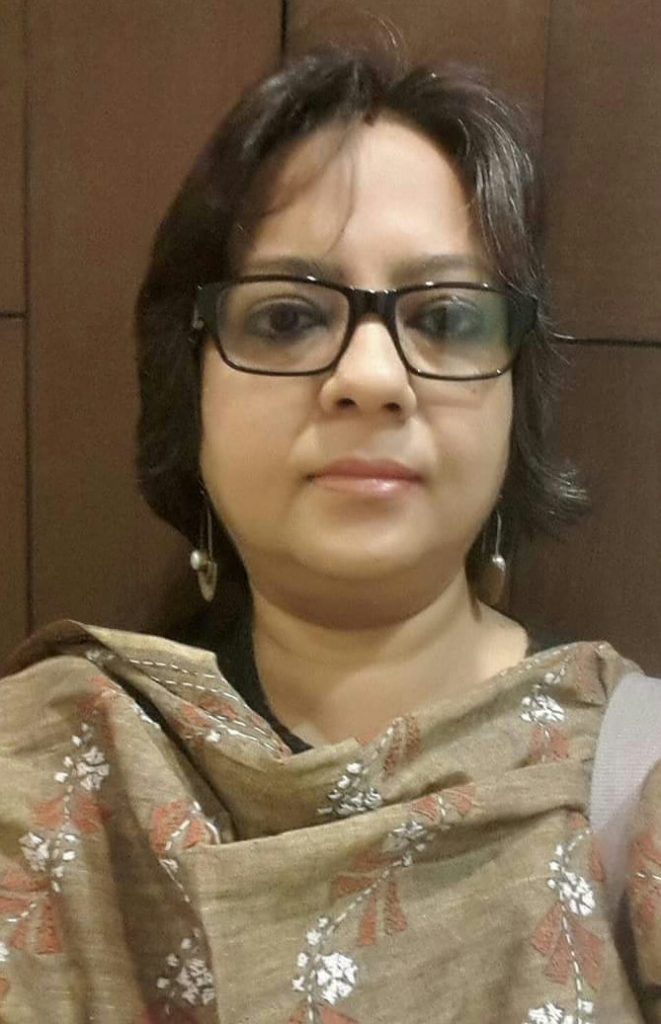Governance – the overlooked route to transformation: How can we best organise for change?
What are the current governance approaches and ways of organising that are being used in attempts to create systems change? What would more systemic governance approaches for our work look/feel like and how might we transition to these?
Part one in a series of four exploring the future of how we govern and organise. Co-written by Sean Andrew, Louise Armstrong and Anna Birney
“Every attempt to write a new human story converges upon just one mundane, heartbreaking problem: How shall we come together, work together, create together? How shall we organise?”
Nilsson, Paddock and Temmink, 2021, Changing the way we change the world (Draft manuscript)
At the heart of change is how we think, relate and act. While these ways of being weave in and throughout our ordinary everyday experiences, they are not always given the intention and continuous attention they need. We believe how we relate, work together, and organise are cornerstones of change making. How we find ways to bring awareness to these elements really matters, and is easier said than done. They need just as much attention as the structural shifts that are required in the coming decade.
With this in mind, we are exploring governance as the place of untapped potential that can enable transformation today and into the future.
We’re defining governance as: The forms, structures and social processes that people and institutions use to create and shape their collective activities.
As such, we, and many others we’re working with and are inspired by (Beyond the Rules, The Hum, Reinventing Organizations, Going Horizontal, Practical Governance, Organization Unbound, Lankelly Chase, Shared Assets, Patterns for Change, Leadermorphosis and Barefoot Guide Connection, to name a few) are calling for governance approaches that reflect systemic principles that are suited for complex adaptive systems. Many of those we’ve listed are experimenting with elements of this, each adapting these to their contexts like Transition Movement and their shared governance approach, or CIVIC SQUARE, who are applying their mission and values into the organisational structures and processes – from how they do recruitment through to how they do financial planning.
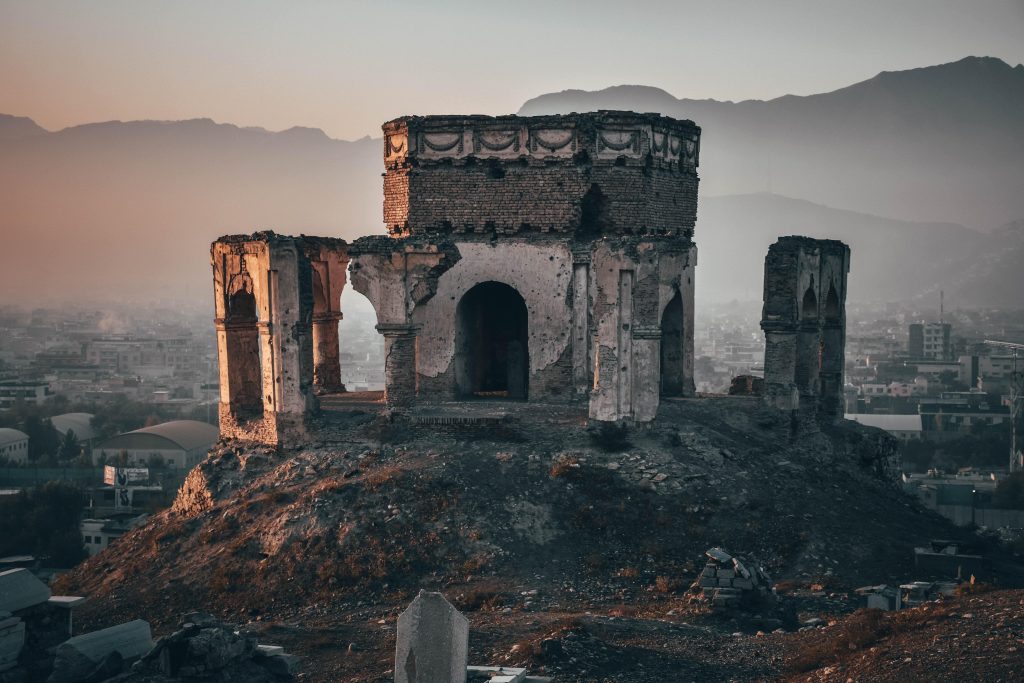
We’re increasingly noticing internally, through our own organisational experience at Forum for the Future, and through our systems change strategy, collaboration and coaching work with others, that many of us subscribe to dominant forms of governance that are designed for a complicated, not complex world. We’ve noticed that sometimes, without intention, our own patterns of organising and those of many of our partners are perpetuating the structures, dynamics and patterns we are trying to shift. For example, we take centralised or hierarchical decision making approaches even though we want to enable greater ownership over a project which can come through taking advice-based decision making approaches where those closest to the challenge are part of the process.
Systemic governance on the other hand enables self-organisation (how a group of people organises their time, attention and resources in ways that meet the urgent necessity of the moment). It cultivates the emergent practices (and enables new system patterns) that help us align to regenerative and distributive approaches that better mimic our living systems.
Our inquiry into governance
After exploring new forms of organising, over the last 18 months at Forum we have been exploring two governance inquiry questions:
- What are the current governance approaches and ways of organising that are being used in attempts to create systems change?
- What would more systemic governance approaches for our work look/feel like and how might we transition to these?
To respond to these questions, we’ve been reflecting on our own organisational life while also learning from current and past collaborations we’ve convened or participated in over the past decade.
What is governance?
So how do people understand governance in their context? Through our inquiry we found that peoples’ understanding and expression of governance varied and was even sometimes quite vague. While governance meant different things to people, depending on their role or context, the people we spoke to talked about it in a few distinct ways, the ‘elements of governance’.
Elements of systemic governance
Systemic governance has both soft and hard elements.
Part of the reason why we tend to think of governance as a fixed process is that we often associate it with a few rigid components. From this exploration we realised that governance is in fact made up of a whole spectrum of elements, which while distinct, together create a unique governance context you may find yourself within, be that in an organisation, a movement, a collaborative endeavour, a community or really any place where people come together to organise something. By naming a spectrum of elements it expands the view of what governance is and how these parts form a tapestry.
We’ve created the figure 8 (below) as a summary of what we’ve heard, recognising that one way of distinguishing these elements is looking at the ‘hard’ or ‘soft’ elements. While the hard and soft elements can sometimes feel in tension with each other – they are in fact interdependent and together they form part of the governance landscape we have to traverse together;

In reality – we recognise these elements can be interchangeably hard/soft and are in symbiosis. Some will be visible and explicit and others invisible and implicit, depending on the context and people’s experience. For example, a “hard” element such as finance might actually be very hidden in an organisation without financial transparency or a “soft” element such as communication and transparency might be experienced overtly as lacking and be a visible gap in ways of working.
Innovating the hard and visible elements of governance
Most of the governance approaches we explored focused on the hard and often more visible, explicit structural elements of the organisation. These seemingly felt easier to figure out with clear problem > solution tactics. For these hard, visible structural elements of governance, people talked about inherited “best practices” that often took the form of compliance protocols. When working systemically, challenges can come when the ‘hard’ or ‘visible’ parts of governance are too rigid and fixed. We found that people working on complex challenges were often bound by these constraints and were yearning for ways to disrupt, reimagine, and innovate these ‘hard’ elements.
One hypothesis we are working with is that the hard stuff (the what) can be a transitory tool and a trojan horse for prioritising the soft stuff (the how).
The soft, invisible elements are the hardest part of governance to shift
The “soft” elements of governance are the implicit less formal cultural components of how people relate and organise. It’s often less tangible and thus harder to shift. Systemic governance is a constant practice of probing, sensing and responding to the dynamic nature of these elements in changing contexts. We found that these elements are too often submerged and therefore if we want to develop resilient adaptable governance approaches we need to bring to the surface and made explicit the soft cultural elements. While these elements are often deprioritised as they are unseen, they are still aspects of governance that materially impact the lived experience of people working within different organising forms.
Why is it so hard to work with the softer issues? The nature and quality of our relationships is the foundation of any governance. Questioning, challenging and reconfiguring established relationships is hard. It can take difficult conversations and processes to bring in different perspectives and overcome unhealthy power dynamics. Bringing self-awareness, paying attention to relational dynamics, creating space to listen and honestly share and transparent communications are the starting points.
Reframing governance as a journey
We heard people thinking about governance as putting structures and processes in place and thinking the rest will follow. Any of the words and connotations people mentioned pointed to governance as something that is fixed and hard, a static thing you set up on a one-off basis when in fact governance approaches are alive, can be enabling and need to be seen as a constantly evolving journey. We’ll explore some more of these governance myths in the next blog piece.
Sign up for the newsletter to get the next blog piece directly to your inbox.
Governance as an overlooked intervention or leverage point for change
These elements of governance play out in all of the many ways when we come together – be that in a multi stakeholder collaboration, across teams or functions in a large organisations, in communities, within networks or distributed movements. Governance is central to any form of organising or organisation creating change. We need to support others to imagine and implement new governance approaches that demonstrate and model how we can operate systemically, as a fractal of the change we are cultivating in the world.
What next?
We offer this figure 8 framework as a way to open up a different conversation about governance and acknowledge it is just one framing. We’d love to know if this resonates with your experience and how the challenges of hard and soft elements play out for you?
We’ll be writing two more pieces in this series. One to explore some of the governance myths we’ve been uncovering through our inquiry (e.g. governance helps us control things). And a second to dig deeper into some of the core systemic governance elements you might start to pay attention to now as critical yeast to influence your organisational practices and experience.
In 2021, we’re starting to explore some of these ideas with fellow travellers who have similar experiences in their context. If these ideas resonate with you or you want explore them more – get in touch with Sean s.andrew@forumforthefuture.org or Louise l.armstrong@forumforthefuture.org
Background context
At Forum for the Future, our governance inquiry is one of our three live inquiries (power, governance, regenerative) we’ve been exploring over the last 18months. This inquiry approach supports our aspiration to be a learning organisation that keeps questioning the assumptions nested in our purpose and supporting structures, processes and practices. Our belief is that these inquiries are helping us continuously become a system-changing organisation that is using our own experience as a site of learning, and as an expression of the change work we’re trying to do in the world. This inquiry has been greatly inspired and supported by those in the field who have been, and are, experimenting with ideas and approaches to governance. This piece is part of our ongoing Future of Sustainability series. In 2021 we’re exploring the narratives and practical interventions needed for transformation in the coming decade.
Read next:
- Exploring transformational governance together Governance can be transformational. When we set our sights on changing the world, we also know that governing well goes beyond preparing our own organisation, network or movement for the future. How do move beyond tweaking the way things currently work and apply governance to transform the ‘systems’ that operate in our society that maintain injustice, oppression and inequality (such as race, patriarchy and class)? (PART 2/4)
- Reimagining governance myths Part three in a series of four exploring the future of how we govern and organise. This piece looks at how people think governance happens today and challenge five commonly held governance myths. (PART 3/4)
- The governance flywheel In this final installment of our series on governance, we introduce the “governance flywheel”1 which highlights three fundamental linked areas that if they are deliberately seeded and nurtured, individually and together, can create the momentum needed to cultivate and grow healthy governance systems. (PART 4/4)
Originally published at Forum for the Future
An enabling, empathetic and courageous leader. I questions and challenges the way things are done, models what is possible and enable others to do that too. Sees potential and nurtures it in people and ideas. Living change while knowing how to strike how to strike the balance between adventure, rest, work and care and nurturing.
For another way of thinking about governance alternatives see Resonance Network's post and media toolkit : THIS IS HOW #WEGOVERN
Energy Network Literacy: On Care-full Dis-Connection, Dis-Entanglement and Regenerative Flow Management
“i think of movements as intentional worlds, or perhaps more accurately as worlds designed by and for intentional people, those who are able to feel the world not as an unfolding accident of random occurrences, but rather as a massive weaving of intention. you can be tossed about, you can follow someone else’s pattern, or you can intentionally begin to weave and shape existence. and yes, the makeup of your web is the same matter as all that already exists, but your direction and pattern can be new, unexpected, agitating new growth. what results from your efforts depends on your intention.”
– adrienne maree brown
I recently returned from a week-long vacation with family to the so-called Northeast Kingdom of Vermont, and a particular location that is deeply nourishing and meaningful for its landscape, its link to family history on my wife’s side and (perhaps for these times) an unusual sense of community. I count myself privileged to have had the time and the opportunity to be in that place with those loving people, with that sense of multi-generational connection.
Heading back “home,” I could feel the tension mounting as my wife and I talked about re-entry. Before thought, my body tightened in anticipation of the return to the mundane daily tasks, to-do lists and un-answered emails/phone messages. The morning after our return, I somewhat absent-mindedly dipped toes into social media and felt my blood pressure rise. “What am I doing?” I wondered, even as I continued to wade in, pulled by questions about what happened while we were away and what new opportunities might be presenting themselves – FOMO (“fear of missing out”) in full effect. When I closed the laptop, perhaps 30 minutes later, I was aware of my stiff neck, shallow breathing, hunched shoulders, and whirling brain. Saved by a 12 year old daughter almost yelling, “Dad, c’mon, let’s get outside and play ball!”
As much of a proponent as I am of collaboration and networks, I am struck by how I can get a bit caught in the approach/avoid loop of connection, and mired in questions of “How to connect?” and “How much is enough connection?” and “What kinds of connection do I really need?” As I engage with others, I realize that these are pretty fundamental ponderings for navigating a more viscerally entangled world.
“When our ancestors spoke about a web of life, they were describing what Western science calls quantum entanglement. They understood that we all originated from the same seed of life, and when that seed exploded and carried life across our universe, we remained connected. Quantum entanglement tells us that any matter once connected physically can never be disconnected energetically (or spiritually).”
– Sherri Mitchell (Weh’na Ha’mu’ Kwasset, “She Who Brings Light)

More and more is being written, spoken and (re)-presented about the fundamentally interconnected nature of our lives, and of Life writ large. In a beautiful essay in Emergence Magazine (“When You Meet the Monster, Anoint Its Feet”) , which weaves connections between climate change, race, racism, evolutionary biology, ecology, myth and narrative, Bayo Akomolafe offers …
“Perhaps most important about this time is that the image of the human is being composted—or, we are experiencing great difficulty determining where the nonhuman stops and the human begins. Everything touches everything else in the Anthropocene—an observation that is supported by, say, current thinking about ‘holobionts,’ assemblages of bodies within bodies within bodies, or intersecting communities that toss out notions of separable individuality. We are holobionts. We live and are lived through; we are composite beings, companion species, emerging within and among assemblages.”
And, as Akomolafe later shares from his indigenous and experiential knowledge, bodies and beings transcend time. More recent research into intergenerational trauma (see the work of Resmaa Menakam and Thomas Hubl) shows that our bodies indeed know the score, not only of our own individual pain, but the suffering passed through our ancestral lines. Husband and wife, and astrophysicist and physician, team Karel and Iris Schriyver, in their book “Living With the Stars,” add that our bodies are always in dynamic exchange with … the wider universe! Our cells die and are replaced by new ones, renewing our entire biological makeup, using food and water as both fuel and construction material. This rebuilding happens by using elements captured in our surroundings and cycled through geological processes, all extensions of galactic explosions and ripples and atoms that formed through collisions with our planet’s atmosphere eons ago.
We are entangled in a multiplicity of ways, containing and residing within multi-dimensional multi-scalar multitudes. I find this simultaneously liberating, dizzying, humbling and dumbfounding. Knowing that everything is interconnected can inspire a profound sense of belonging and ease, yes, and sometimes it can make it a bit hard for me to plan or get through the day!
And so here we are, exquisitely entwined, and yet also individuals, or at least bounded organisms with a sense of individuality, of distinction, of the need to preserve the integrity and dignity of something called “me” or “self.” And the question of these times would appear to be how we can honor a healthy sense of self/individual, whole communities, and Life, all at once.
“To allow oneself to be carried away by a multitude of conflicting concerns, to surrender to too many demands, to commit oneself to too many projects, to want to help everyone in everything, is to succumb to violence. The frenzy of our activity neutralizes our work for peace. It destroys our own inner capacity for peace. It destroys the fruitfulness of our own work, because it kills the root of inner wisdom which makes work fruitful.”
– Thomas Merton

While there have been understandable and important pushes to get beyond the individualistic and atomistic view, I have the feeling that some of this emphasis, as with all pendulum swings, can go a bit too far. Seeing the world as profoundly interconnected might drive a strong desire to reclaim a kind of forgotten birthright, and in my experience, it can also result in getting lost, especially if it is guided by an underlying desire to fully understand, grasp and/or control it all (colonial mindset?). Or if that drive is purely to belong to something, anything, no matter its underlying values, to spare the pain of felt/perceived separation.
A certain view in contemporary physics holds that the world, the universe, is entirely made up of an infinite amount of information, a vast expanse of sensory inputs that all taken together would be utterly overwhelming to our individual apparatus. And so we have our human senses as filters to sift through, make sense and identify/assemble what is most … useful, interesting, advantageous. The point is, there is always more than meets (or at least is taken in by) our eyes, ears, nose, tastebuds, touch, etc. This calls to mind the ladder of inference, a framework we teach at IISC that helps people remember that we are often recycling conclusions we have drawn from a very partial understanding of reality, and that it might behoove us to expand our “view” to reach more helpful (just, prosocial, sustainable) conclusions and actions.
That said, simply taking in more, or making more connections, may not lead to a better place, if it results in overwhelming nervous systems. So it seems there is a balancing act here. Just as we often can’t do something new without letting go of something old, there is a need to modulate what one takes in – news, ideas, people, and possibilities. Connection and flow management. Energetic discernment. Intentional dis-connection and dis-entanglement.
What might this look like in this networks upon networks networked world? A few thoughts …
“Between you and me, now there is a line. No other line feels more certain than that one. Sometimes it seems not a line but a canyon, a yawning empty space, across which I cannot reach.
“Yet you keep reappearing in my awareness. Even when you are far away, something of you surfaces constantly in my wandering thoughts. When you are nearby, I feel your presence, I sense your mood. Even when I try not to. Especially when I try not to. . . .”
– Donella Meadows
In a previous post, I shared some of the wisdom of network science as taught by Danielle Varda and colleagues at Visible Networks Lab. They make the point that when it comes to creating strong (resilient and regenerative) networks, more can be less in terms of the connections a person has. Connectivity and related flows can be ruled by a relentless growth imperative(capitalism?)that is not strategic or sustainable. More connections require more energy to manage, meaning there may ultimately be fewer substantive ties if one is spread too thin. Instead, the invitation is to think about how to mindfully maintain a certain number of manageable and enriching strong and weak ties, and think in terms of “structural holes.” For more on this social network science view, visit this VNL blog post “We want to let you in on a network science secret – better networking is less networking.”
Over the last several years, I have been playing with a set of about a dozen principles (give or take) for network thinking and action. One that seems quite helpful here is the saying, “Do what you do best and connect to the rest.” As ecosystems become more robust and complex, individual participants are invited to carve out more specific niches, and be oriented towards synergistic and supportive relationships with others. In other words – stop trying to do it all, or connect to it all! It’s not possible, it can create unnecessary competition, overwhelm and inhibit “collaborative efficiencies.” This also aligns with a metric of energy network and systems science (see below), which focuses on the importance of a diversity of roles in healthy living systems. Share and spread the wealth!
As just alluded to, the emerging field of “energy systems science” points to a number of different factors or indicators that contribute to long-term living system (including human systems) health and thriving. Four of these indicators fall under the heading of “measures of flow.” Thinking about how these apply to our own and/or collective in-take and sharing of information/energy might be helpful for knowing what is “sufficient:”
- Robust cross-scale circulation: How rapidly (too fast?/too slow?) and well do a variety of resources reach all parts of an individual/social body?
- Regenerative return flows: To what extent does the individual/social body recycle resources into building and maintaining its internal capacities? Is there too little (depletion)? Is there excess (hoarding)?
- Reliable inputs: How much risk and uncertainty is there for critical (health promoting) resources upon which the individual/social body depends?
- Healthy outflows: What impacts do the individual/social body’s outflows have externally?
On a more personal tip, I have been married for almost 20 years. What has perhaps been one marriage from the outsider’s perspective has been many from the inside, as other long-standing intimate partners can surely appreciate. We have learned and grown over the years. One important lesson has been knowing when we are too enmeshed and need to separate for some time. There is a point of diminishing returns in many of our heated discussions/ arguments, and if we do not dis-entangle or dis-connect, we have learned, we can do damage to the relationship.
Along the same lines, two of our daughters are identical twins, now twelve-years old. What we have observed about them is what we have heard about many twins – they are truly uniquely connected. There are many times when we quietly watch with fascination as they, seated on opposite ends of the room, engage in similar gestures (scratching their heads with the same hand at the same time, for example) seemingly without direct awareness. Quantum entanglement in full effect! And they can get themselves enmeshed at times and in ways that drive each of them, and the entire family system, to the edge. They are learning that they need and how to differentiate and take space, even as they have a natural gravitational pull to their other half.
Knowing when to create a bit of a boundary (what Buckminster Fuller once called, “a useful bit of fiction”), a separate amniotic sack if you will, and when it is optimal to connect more fully often requires attention and discernment, for all kinds of relationships.
“Beware of the stories you read or tell; subtly, at night, beneath the waters of consciousness, they are altering your world.”
– Ben Okri
The movie The Social Dilemma and the work of Douglas Ruskhoff (see Team Human) both point to the perils of getting caught up in our increasingly socially mediatized world. The algorithms behind these powerful tools are designed to capture our attention, pressing our buttons oriented towards hedonism (“likes”) and fear/outrage. A recent article in The Atlantic Monthly (“You Really Need to Quit Twitter”) points to how difficult it can be to break this habit. This is not to say that these tools are inherently bad or evil. They are certainly formidable, and require considerable attention and intention. Social media fasts and limited dips can help, as well as being mindful about what and why we are both sharing and consuming (see this other recent post for some considerations on this – The Wisdom of W.A.I.T.ing: Mindful Sharing in a Network Age.
If dis-engagement is not an option or ideal, there are a number of practices I have been learning and using that can help to manage energy exchanges, both in-person and virtual:
- From the Rockwood Leadership Program, I learned the practice of imagining that my body is like meshwork (think a fishing net), when something intense is coming at me, so that it can pass through me, and I don’t use too much energy resisting or having it get stuck in my body/psyche.
- From a couple of local trauma therapist who focuses on racialized trauma, I have learned the practice of using imaginative “shields” (in my mind’s eye) on the outside and inside of my body, to allow for energy coming in or going out. Silver shields on the exterior repel unwanted energy, and on the inside they keep precious energy in. Grey shields allow some energy in or out.
- From a number of practitioners, I have learned the practice of slowing my breath to manage energy flow, in-take and circulation.
- From Qigong Master Robert Peng I have learned how to use a “circuit breaker” for the life force (or “chi”) moving through me by enclosing my thumbs with the fingers on each hand, which can diminish intense energy flows when engaged with others.
- From The Weston Network/Respectful Confrontation community, I have learned the practice of being aware of my own personal space, surrounding my body, and respecting that boundary when engaged with others.
- Also from The Weston Network, I have learned about the practice of embodied energetic balance when reaching out to make contact with others, while not over-extending, and also maintaining a firm sense of grounding and dynamic flexibility. I have also been reminded, helpfully, that balance is never static. We are constantly in motion, if we are alive, and when “most balanced,” are actually able to recover quickly from being extended or engaged in some way. So a question to carry is “What supports my ongoing ability to recover?”
- From Harold Jarche, I have learned many ways of managing personal knowledge development through mindful connection to different networks in ways that ideally make them all “smarter” and don’t simply ask them/me/us to work “harder.” Of particular help is knowing what one can reasonably expect in terms of energetic flow and return from work teams versus communities of practice versus one’s wider social networks (see image above).
- Especially in work that may be emotionally challenging and draining, I have learned from both Acceptance and Commitment Therapy/Training, as well as teacher Tara Brach, the idea of “tending and befriending” otherwise unwelcome feelings that inevitably come up, so that rigid resistance does not make those emotional visitors stronger.
- And in general, I am embracing and making space for more silence, solitude and stillness, challenging some of my deep seated anxieties about losing connection and a sense of belonging in the world (what some would say FOMO is really about – for more about this, see this informative talk by Tara Brach).
And there are SO MANY teachers out there and much wisdom to glean that I certainly welcome others to share! It is my hope that many more of us can become adept energy and flow scientists/artists/healers/workers as we intentionally weave patterns that are the basis of the better world we sense is possible and know is necessary.
“The point of solitude is to give yourself time to grow in your own way, while the ultimate goal remains the difficult task of love and connection.”
– Damion Searls (from the introduction to a new translation of Rainer Maria Rilke’s Letters to a Young Poet)
oringially published at Interaction Institute for Social Change
Curtis Ogden is a Senior Associate at the Interaction Institute for Social Change (IISC). Much of his work entails consulting with multi-stakeholder networks to strengthen and transform food, education, public health, and economic systems at local, state, regional, and national levels. He has worked with networks to launch and evolve through various stages of development.
The Web of Change
Creating Impact Through Networks
The following post is excerpted from the introduction of Impact Networks: Create Connection, Spark Collaboration, and Catalyze Systemic Change, now available in print, as an audiobook, and as an ebook.
“We are caught in an inescapable network of mutuality, tied in a single garment of destiny. Whatever affects one directly, affects all indirectly.”
— Martin Luther King Jr., Letter from a Birmingham Jail
Since the beginning of our species, humans have formed networks. Our social networks grow whenever we introduce our friends to each other, when we move to a new town, or when we congregate around a shared set of beliefs. Social networks have shaped the course of history. Historian Niall Ferguson has noted that many of the biggest changes in history were catalyzed by networks—in part, because networks have been shown to be more creative and adaptable than hierarchical systems.[1]
Ferguson goes on to assert that “the problem is that networks are not easily directed towards a common objective. . . . Networks may be spontaneously creative but they are not strategic.”[2] This is where we disagree. While networks are not inherently strategic, they can be designed to be strategic.
When deliberately cultivated, networks can forge connections across divides, spread information and learning, and spark collaborative action. As a result, they can “address sprawling issues in ways that no individual organization can, working toward innovative solutions that are able to scale,” write Anna Muoio and Kaitlin Terry Canver of Monitor Institute by Deloitte.[3] Networks can be powerful vehicles for creating change.
Of course, networks can have positive as well as negative effects. Economic inequality and the advantages and disadvantages of social class, race, ethnicity, gender, and other aspects of individual identity are in large part the result of network effects: certain types of people form bonds that increase their social capital, typically at significant social expense to those in other groups. Much of the world has become acutely aware of the harmful network effects arising from social media and the internet. This includes the proliferation of online echo chambers that feed people what they want to hear, even when it means rapidly spreading misinformation.
In our globally connected and interdependent society, it is imperative that we understand the network dynamics that influence our lives so that we can create new networks to foster a more resilient and equitable world. The choice in front of us is clear: either we can let networks form according to existing social, political, and economic patterns, which will likely leave us with more of the same inequities and destructive behaviors, or we can deliberately and strategically catalyze new networks to transform the systems in which we live and work.
A case in point is the RE-AMP Network, a collection of more than 140 organizations and foundations working across sectors to equitably eliminate greenhouse gas emissions across nine mid- western states by 2050. From the time it was formed in 2015, RE-AMP has helped retire more than 150 coal plants, implement rigorous renewable energy and transportation standards, and re-grant over $25 million to support strategic climate action in the Midwest. RE-AMP’s work is necessary in part because other powerful networks are also at play to maintain the status quo or to enrich the forces that profit from pollution and inequality.
We can look to the field of education for another example of a network creating significant impact. 100Kin10 is a massive collaborative effort that is bringing together more than three hundred academic institutions, nonprofits, foundations, businesses, and government agencies to train and support one hundred thousand science, technology, engineering, and math (STEM) teachers across the United States in ten years. Founded in 2011, 100Kin10 is well on track to achieve its ambitious goal and has expanded its aim to take on the longer-term systemic challenges in STEM education.
The Justice in Motion Defender Network is a collection of human rights defenders and organizations in Mexico, Guatemala, Honduras, El Salvador, and Nicaragua that have joined together to help migrants quickly obtain legal assistance across borders. Throughout the ongoing family separation crisis created by US immigration policies during the Trump administration, this network has been essential in locating deported parents in remote regions of Central America and coordinating reunification with their children.
Or consider a network whose impact spans the globe, the Clean Electronics Production Network (CEPN). CEPN brings together many of the world’s top technology suppliers and brands with labor and environmental advocates, governments, and other leading experts to move toward elimination of workers’ exposure to toxic chemicals in electronics production. Since forming in 2016, the network has defined shared commitments, developed tools and resources for reducing workers’ exposure to toxic chemicals, and standardized the process of collecting data on chemical use.
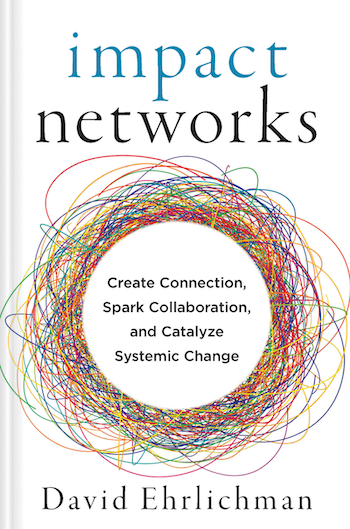
Networks like RE-AMP, 100Kin10, the Defender Network, and CEPN—along with many others you will learn about in this book—were not spontaneous or accidental; rather, they were formed with clear intent. These networks deliberately connect people and organizations together to promote learning and action on an issue of common concern. We call them impact networks to highlight their intentional design and purposeful focus, and to contrast them with the organic networks formed as part of our social lives.[4]
We think of impact networks as a combination of a vibrant community and a healthy organization. At the core they are relational, yet they are also structured. They are creative, and they are also strategic. Impact networks build on the life force of community—shared principles, resilience, self-organization, and trust— while leveraging the advantages of an effective organization, including a common aim, an operational backbone, and a bias for action. Through this unique blend of qualities, impact networks increase the flow of information, reduce waste, and align strategies across entire systems—all while liberating the energy of multiple actors operating at a variety of scales.
All around the world, impact networks are being cultivated to address complex issues in the fields of health care, education, science, technology, the environment, economic justice, the arts, human rights, and others. They mark an evolution in the way humans are organizing to create meaningful change.
To learn more about what impact networks are, how they work, and what it takes to cultivate and sustain them, check out the new book Impact Networks: Create Connection, Spark Collaboration, and Catalyze Systemic Change.
[1]: Niall Ferguson, The Square and the Tower: Networks, Hierarchies and the Struggle for Global Power (London: Penguin Books, 2018), xix.
[2]: Ferguson, The Square and the Tower, 43.
[3]: Anna Muoio and Kaitlin Terry Canver, Shifting a System, Monitor Institute by Deloitte, accessed December 17, 2020, https://www2.deloitte.com /content/dam/insights/us/articles/5139_shifting-a-system/DI_ Reimagining-learning.pdf.
[4]: June Holley has called them “intentional networks” in Network Weaver Handbook: A Guide to Transformational Networks (Athens, Ohio: Network Weaver Publishing, 2012). Peter Plastrik, Madeleine Taylor, and John Cleveland have called them “generative social impact networks” in Connecting to Change the World: Harnessing the Power of Networks for Social Impact (Washington, DC: Island Press, 2014).
Originally published at Converge
David Ehrlichman is a catalyst and coordinator of Converge and author of Impact Networks: Create Connection, Spark Collaboration, and Catalyze Systemic Change. With his colleagues, he has supported the development of dozens of impact networks in a variety of fields, and has worked as a network coordinator for the Santa Cruz Mountains Stewardship Network, Sterling Network NYC, and the Fresno New Leadership Network. He speaks and writes frequently on networks, finds serenity in music, and is completely mesmerized by his newborn daughter.ehrlichman@converge.net
Reimagining a Regenerative Future — Part 1
Navigating radical uncertainty with radical tenderness…

MATURITY is the ability to live fully and equally in multiple contexts; most especially, the ability, despite our grief and losses, to courageously inhabit the past, the present and the future all at once. The wisdom that comes from maturity is recognized through a disciplined refusal to choose between or isolate three powerful dynamics that form human identity: what has happened, what is happening now and what is about to occur.
~Anais Nin (quoted in brainpickings; italics mine)
Never has there been the need to inhabit multiple contexts more than now — “to courageously inhabit the past, the present and the future”. The start of 2020 presaged chaos, collapse, and terror. In January, the megafires of Australia. In February, megafloods. In March, a deadly pandemic. No respite! The machineries of the world has collapsed and laid bare their fractures and fissures in the face of Covid-19 highlighting the appalling inequality, failed governments, spurious economic policies, failing and flailing nation-states, the exploitation, extortion, and extraction that runs the economy, the dehumanization of humans, and utter disregard for this fragile and beautiful planet.
2021 began with vaccines, which could and should have brought nations together with humanity prevailing over all surface differences to face a global challenge. Instead this degenerated into “vaccine apartheid” with wealthy nations like the USA and Britain opposing India and South Africa’s bid to waive Covid-19 vaccine patents. Vaccine hoarding is another game being played: “… though rich nations represent just 14% of the world’s population, they have bought up 53% of the most promising vaccines so far.” Rich countries hoarding Covid vaccines, says People’s Vaccine Alliance. What could have been a defining moment of compassion, connection, and care in the civilizational narrative turned into repulsive power play, politics, profiteering, and a show of brute strength and shocking neocolonial racism.
The dual traps of neocolonialism and neoliberal capitalism blinded leaders and nations to the most crucial lesson that the pandemic taught us. The infallible truth of our inextricable interconnectedness and interdependence with all sentient beings and this Planet. We cannot survive, let alone thrive, as long as a vast majority of the planet remains oppressed, disregarded, and disavowed. “All the catastrophes we face now are byproducts of a feeble, decrepit industrial-capitalist economy. All that is what capitalism really is — exploitation of you, me, the planet, life on it, democracy, and the future, by organizations wealthier than countries, with legal superpowers, whose only goal is to maximize profit, at any cost. How are we to cohere, prosper, survive, endure — grow?” ~ Umair Haque. One would have thought that the pandemic must have driven this lesson home when a microscopic zoonotic virus jumped species and ravaged the world. Apparently not!
The pandemic, nonetheless, was a point of discontinuity — a rupture in the seams of the already fraying civilizational narrative of universal and never-ending growth and development, the utopia of technology as savior, and the myth of the West leading the rest of the world on an onward march of progress. There have been many moments of disruption, but none spanned the globe with such a visible and terrifying impact bringing mighty nation-states to their knees and halting the juggernaut of the ostensibly unstoppable machinery of global economy. This rift threw up with blinding clarity the brokenness that lay hidden just beneath the surfaces of society, politics, and other machineries and machinations of civilization. The simultaneous collapse of essential systems across the globe — from healthcare and economics to politics and education — are visible evidence of an obsolescing and degenerating civilizational narrative. The depravity and decadence underlying the world order revealed themselves in all their shame.
2020 became an inflection point in the trajectory of the Anthropocene catapulting us directly into the liminal space of radical uncertainty for which we had no script. A space without stories to anchor us, a space of incongruities and paradoxes, of death and decay — a seemingly yawning chasm of obscurity. We were left grappling to make sense. In this interregnum, the questions we ask are crucial acting as compasses in an essentially map-less territory of radical uncertainty.
What if we could navigate radical uncertainty with fierce compassion and radical tenderness — for ourselves, for each other, for all sentient beings, for this beautiful, fragile Planet?
What would those choices and decisions made from a place of fierce compassion look like?
How would we envision our collective future from a place of radical tenderness?
In a 2015 Manifesto called Radical Tenderness, Dani d’Emilia and Daniel B. Chávez writes: “radical tenderness is to not collapse in the face of our contradictions… is to have peripheral vision; to believe in what cannot be seen.” The words are hauntingly evocative, prophetic, and profound. The chaos and conflicts threatening us daily are overwhelming, and it is easy to sink into despair and a desperate yearning for some semblance of stability and certainty. The pandemic can be a portal towards a regenerative future inviting us to hospice what no longer works, and to midwife the new. If only we can “believe in what cannot be seen”.
How can we collectively hold space for the new shoots to emerge from the debris and decay of this collapsing world?
How can we be stewards of those narratives that have been disowned and denied for centuries — those unheard, unseen, unacknowledged ways of being, seeing, sensing, and knowing which can be our salvation towards a regenerative future?
We know in our guts that there is no going back to the “old normal” if we want to survive as a species on this Planet we call home. We can also feel the quiet, ephemeral presence of the more beautiful world our hearts know is possible. “Another world is not only possible, she is on her way. On a quiet day, I can hear her breathing,” wrote Arundhati Roy.
The hegemonic narrative of growth, development, and modernity imposed through the imperial project of colonization — Eurocentric and Western — has not only been running the show for centuries but has sterilized and homogenized all other ways of being and relating on this planet. Donna Haraway called it “playing the god trick”. Now this “god trick” has spectacularly failed as it must. The ineffectuality of this monocultural worldview in a diverse and pluricultural planet is starkly visible.
By excluding, delegitimizing, and disavowing myriad ways of being, seeing, learning, and knowing that did not subscribe or partake in the mainstream, hegemonic, civilizational narrative, we failed to make sense of an inconceivably diverse world. The arrogance of this primarily Western cosmology and ontology being the only meaning-making device available to humanity is astounding in its presumption.
The pandemic is clearly an inflection point. The breakdown of the old order and its edifices are asking us to slow down, to connect with our inner wisdom, to lean into this liminal space of uncertainty and ambiguity, to widen our peripheral vision, and listen to Earth’s invitation to co-create a thriving, flourishing Planet — “a world where many worlds fit”. And maybe, just maybe — we will catch a glimpse of the shoots of the possible futures amidst the debris and decay of the dying.
Let us slow down and listen to the unheard, unnoticed, unappreciated voices and narratives signaling to us from the peripheries, from the edges of “civilization”. Voices and stories that have for centuries been marginalized, demonized, invisibilized — the oppressed, brutalized, and systematically persecuted voices of the human and the more-than-human. The sidelining was part of the project of colonization resulting in immeasurable loss, disconnection, and untethering for millions in the Global South. Global South is not a geographical location but a metaphorical identity that enfolds the unseen and the unheard, the disowned and the disavowed, the delegitimized, invisibilized, and demonized billions. Global South exists in the peripheries and margins everywhere. We become aware of them in movements like #BlackLivesMatter, #IndiaFarmersProtest, and many other local movements of dissidence and resistance that fly under the radar, are never reported, often brutally quelled — in short, effectively and methodically made invisible.
Why is it crucial to integrate the unheard, unseen, unfamiliar narratives into the new civilizational narrative of a regenerative future?
What is the essence of a world that contains multitudes of narratives — a world where many worlds fit?
How do we reimagine a regenerative future — a world where many worlds fit?
What are the founding principles and values of a Pluriverse?
When we acknowledge with humility that we can never know it all — that our knowledge will always be situated, contextual, and partial stemming from the land and its culture can we step into the emergent space of radical uncertainty with hope and humility. What we can do is listen with fierce compassion and co-create containers for fearless dialogues of possibilities.
Dialogues offer us opportunities to intertwine and interweave the myriad ways of being, seeing, and knowing. And dialogues also save us from the dangers of a single story. Dialogues offer us spaces for co-sensing and listening to each other.
~TEDx, The Story of the Global South
In the next part of the post, I explore the concepts of Pluriverse, and why is this necessary to shift the civilizational meta-narrative to one that is inclusive, compassionate, pluri-cultural, and regenerative. None of us have the answer, but we can collectively re-imagine a regenerative future by coming together in fearless dialogues — dialogues revolving around our hurts, our hopes, and our healings.
Article originally published here in The Age of Emergence
Sahana Chattopadhyay —Sahana Chattopadhyay is a global Speaker, Writer, Master Facilitator, Organization Development Consultant, and Coach. She works at the intersection of Complexity, Human Potential, Organizational Transformation, Systems Thinking, and Emergence. Her passion is to enable organizations to develop the capacities, skills, and mindsets to become “thrivable” in the face of uncertainty and ambiguityr, writer, facilitator, and story-seeker. (https://linktr.ee/sahana2802)
I am a part of the Possible Futures collective. I deeply acknowledge the many fearless dialogues here that have helped me shape my thoughts and birthed new ones.

PLEASE DONATE to help Network Weaver continue in it’s mission to offer free support and resources to networks worldwide.
Organizing Liberatory Networks: An Invitation
These are emerging reflections on the work we have done within networks, which includes networks for and led by people of color, multi-racial networks, queer networks, immigrant networks, and other groups that have come together to shift systems towards equity and liberation. In particular, we want to name the leadership of Black and Indigenous women and femmes within these networks who contribute wisdom and emotional labor to support the work of these groups. We are also grateful for the wisdom shared by The Queen Sages, Child Care for Every Family, Protecting Immigrant Families, All Above All, Transformative Leadership for Change, Center for Innovation in Worker Organization and their Women Innovating Labor Leadership Program, and all the participants of the movement network organizer pilot.
The events of the last year, continuing to this year, have called on us to deepen practices that center intersectionality, solidarity, racial justice, and mutual aid. Organizers have been working one-on-one with people in communities and side-by-side with other organizations to support people’s immediate needs and build movements for love, dignity, and justice. Along the way, organizers have deepened their praxis on transformational organizing and working in networked ways. (We think of praxis as having a stance of discovery and learning as we experiment with and embody aligning our values, beliefs, and worldviews with our practices, mindsets, and ways of being.)
This blog shares what we are learning from organizers and grassroots groups about organizing with and in networks. These insights are constantly evolving and changing so we invite organizers, networks, capacity builders, and those who fund this work to learn, practice, and deepen our learning together on how to catalyze and shape liberatory networks. We are in a moment of possibility where we can hold the learnings from the last year(s) and continue to build, nourish, and sustain networks that disrupt conditions in the sector to advance love, dignity, and justice.
What Are Liberatory Networks?
Over the last decade, we’ve learned a lot about how to nurture and sustain powerful, equitable networks (by network we mean collective efforts that seek to align people across constituencies, geographies, issues, or movements to accomplish something no individual entity could do alone). Allen Kwabena Frimpong at AdAstra Collective has introduced us to different types of networks such as the decentralized, self-organized network with many overlapping clusters and a strong periphery. Folks like Deepa Iyer and June Holley have helped us to understand the roles individuals play within networks and movements, such as “the guardian” who creates the conditions for the network to thrive, or “the healer” who mends harm within it. Finally, organizers have helped us understand the essential capacities networks need to be sustainable and advance equity, such as weaving relationships that center equity and trust or managing polarities, conflict, and the distribution of power and resources.
As working in networked ways becomes the norm, we are seeing professionalization, technocratization, and the loss of the relational soul of many of our networks. Thus, we want to elevate what we are learning from folks of color and queer folks who have been catalyzing, co-creating, and evolving networks that embody transformation at the personal, organizational, and network levels. These networks are interdependent, relational, evolving ecosystems where we can be our whole selves, be mutually supportive and accountable, and co-create new futures—where both what we are doing together and how we are doing it are important and integral. In order to distinguish the work of these groups from conventional networks, we refer to them as “liberatory networks.”
Liberatory networks create space for long-term visioning, self-awareness, naming and addressing the oppression that is replicated in our strategies, and the healing of personal suffering. They support individuals to ground in their ancestral and spiritual roots. They have mechanisms to hold people through traumas, triggers, harm, and internalized oppression in ways that restore relationships and connection. Member organizations are actively doing anti-racism/oppression work internally to show up in solidarity with others and in accountability with community, staff, and board.
These powerful networks are disrupting what we have been taught, and now assume, about what strong leadership and operations should look like in the nonprofit sector. Many networks and organizations are moving from solo charismatic leaders to shared leadership, from “power over” to co-powering, from top-down knowing to collective meaning-making, from defaulting to habits of white supremacy culture to practices centering BIPOC leaders and advancing the collective liberation of all people. Through these practices, liberatory networks, in turn, enable us to advance equitable systems change and shift culture overall.
Invitation to Intentional Praxis
As Stacey Abrams points out, now is the time to build the infrastructure we need to have the power to bring forth our most radical imaginations for a new society. This infrastructure will be and already is networked with clusters of organizations and individuals that are interconnected. One organization or short-term coalition cannot meet growing community needs or support healing from trauma; cannot absorb, sustain, or deepen the engagement of millions of people who want to participate; and often cannot transform society. Liberatory networks allow us to build, aggregate, and wield more power. They can provide a space to reconnect and heal from racialized harm, isolation, burnout, competition, fragmentation, and campaign-to-campaign exhaustion. They can enable us to collectively deepen our praxis towards liberation.
Organizers are important bridgers both across and within liberatory networks. When organizers have space to work with community and network members, they can co-create liberated, powerful, and creative spaces that inform and shape liberatory networks. When included in developing bold visions and strategies at the network level, organizers bring these ideas into relationships and action on the ground.
Organizers are already drawing connections within their work and learning about and co-creating liberatory networks through their own experimentation. At the same time, organizers and other network members, such as capacity builders, facilitators, and funders, could be stronger partners and architects in building and nurturing the infrastructure we need for a liberated future if there were more spaces for intentional praxis and broader sharing of these learnings across – in addition to within – networks.
What We Are Learning About Organizing Liberatory Networks
The following are praxis seeds for organizing in networked ways to advance liberation. We draw on stories shared through two pilot classes co-authors Susan, Trish, and Robin did with 29 organizers, a convening we did with grassroots leaders and funders, and our own experiences partnering with organizing groups and networks. We invite you to contribute your own insights as well so that we can continue a dialogue about organizing liberated networks. What is your praxis? How can we continue to evolve our practices to get closer to our aspirations of liberation and racial justice?
1. Centering racial equity and healing, particularly addressing and repairing inequitable distribution of power, resources, and labor
When working in and across networks, organizers are being thoughtful and transparent about how to marshall resources, recognition, and capacity equitably given current and historic racism and intersecting oppressions. Organizers spoke to three ways that they are doing this. First, several organizers shared how they use somatic practices and storytelling to support BIPOC members to develop a racial analysis, connect to ancestral wisdom, and embody what it means to center themselves. As one example, an organizer described this somatic stance: “I have my hands out; I’m open. I have one foot forward and one foot back; as a male Latino, I’m listening to women and courageously taking space against patriarchy.” Second, when individuals are grounded in their whole selves, organizers can facilitate conversations about the differences among groups. One person, for instance, shared how white and BIPOC caucuses helped develop radical relationships across racial groups. Lastly, organizers in networks are addressing inequitable distributions of labor, resources, credit, and compensation. Women of color and Black women and femmes, in particular, often hold emotional labor and relational work in networks. Participants at the NEST1 convening discussed ways to shift this dynamic by compensating women for this invisible labor, sharing or shifting responsibilities to white men, and prioritizing regional tables that center leaders of color.
Opportunities for Praxis Exploration
- Centering people of color, blackness, and indigenous peoples while de-centering whiteness
- Building a foundation of trust to recognize power differences and have courageous conversations
- Embodying love, human dignity, and compassion
- Unpacking levels of oppression while recognizing the historic social construction of racism
- Moving from oppression to liberation by reconnecting to source, story, body, and emotions (thanks to Monica Dennis for this framework)
- Attending to who does the emotional labor and how we share that or rectify it
- Managing the tensions between addressing immediate needs of communities of color and laying long-term foundations for transformation
- Reflecting on where our movements have failed to embody our values and consciously co-create the conditions for embodying them moving forward
- Centering reflection, learning, repair and re-creation as a continuous and loving process.
2. Doing the inner work needed for personal and interpersonal transformation, which is critical for nurturing radical relationships and our interdependence
There are two areas of inner work that are top of mind for organizers working in networked ways. The first area is nurturing radical relationships and connections within and across movements. Two of the organizers we work with shared that, when they had the opportunity to develop a shared political analysis and vision with a people of color caucus over the course of a two-day retreat before collaborating with the broader network, it enabled them to nurture trust, recognize shared values, and find ways to honor each person’s and organization’s contribution to the movement. Another organizer shared how they connected two groups that would not normally be allies by asking a powerful question: “What does home mean for you?” This question later led to a storytelling organizing process across multiple organizations, supporting both individual and group transformation.
The second area is embracing generative tensions as a liberatory practice. These tensions are often framed as polarities and include abundance and scarcity, conflict avoidance or expression, centralization or decentralization, focusing nationally or statewide, transparency and information overload, accountability for racialized harm and cancel culture, calling partners into a radical stance or compromising for an interim win, and so many more. Organizers regularly navigate these tensions as their context continuously evolves. This involves reframing disagreement from being divisive to being generative. Navigating tensions can deepen our collective capacity to make meaning of complex issues. It can help groups discern when our desire for resolution is rooted in our discomfort with holding multiple and different ideas (so we could get more comfortable living with conflict) and when this desire is needed to maintain the integrity of the network. Organizers further shared that they use racial healing, restorative justice, conflict resolution, polarity management, forward stance, and many other approaches to name and reconcile tensions and realign and heal networks and relationships.
Opportunities for Praxis Exploration
- Integrating head, heart, and body
- Embracing change and emergence
- Nurturing a whole person and their ways of being
- Creating space for relationship building
- Recognizing difference, naming tensions and polarities, reconciling conflict generatively, and healing harm
- Tending to well-being and sacred grounding
- Supporting self and community care
3. Shifting to more emergent and collective ways of understanding and navigating complex systems change
Organizers regularly engage community and network members to analyze systemic root causes and identify leverage points for transformation. They use a range of practices like storytelling circles and collective vision murals to do so. During the pandemic, organizers became pros at adaptation – moving to digital organizing, virtual policy advocacy, and mutual aid to address emerging community needs. They built in check-ins, yoga, breathwork, meditation, and other practices to support themselves and community members to be resilient. Organizers are always adapting as they seek complex systems change including:
- Tending to both campaigns and the sustainability of people, organizations, and the network overall
- Figuring out when all network members need to be in agreement and when a critical mass of a network can move things forward
- Having ways for parts of a network to opt in or out of democratic processes
- Flexing between decentralized experiments with liberated models and coordinated targeted campaigns
NEST convening participants also shared how networks are themselves systems, and people need well-resourced spaces to disrupt white supremacy, model liberatory ways of being with each other, and translate learnings from successes and failures without judgment.
Opportunities for Praxis Exploration
- Forging interconnectedness and interdependence and breaking silos
- Shifting from scarcity to abundance
- Embracing change and emergence while letting go of certainty and the idea that healthy networks are static
- Developing a complexity mindset, which means assuming disagreement, unpredictability, ambiguity, and emergent patterns
- Listening deeply, holding multiple perspectives (i.e., individual, organization, and network), and generating nuanced alternatives
- Experimenting as a way to take risks, innovate, and learn
4. Sharing leadership and decision-making power in ways that lift up Black and Indigenous peoples and other people who have historically been excluded from power
Sharing leadership is core to transformative organizing in networks. What this means for organizers is supporting community members to recognize and develop their own leadership, and centering Black, Indigenous, and other people of color in leadership (both of which are critical in non-network contexts as well). For instance, women of color organizers Trish Tchume and Aida Cuadrado Bozzo have worked with groups of organizers to navigate complexity and emergence (which are typical for networks), in support of a shared vision, build teams that are intentional about staying in “right relationship,” and call in community members to a liberatory stance.
Sharing leadership and power also means creating transparent feedback loops, opportunities for community members to practice different leadership roles within a network, and spaces to collectively connect to heart, body, and spirit. For instance, one organizer shared how they used salsa dancing to invite people to show up as their full self and see the different roles in a movement (e.g., lead, follower, creating space, etc.). As another example, organizers are engaging community members (who are compensated for their time), to gather community perspectives, stories, and experiences; shape priorities of the network itself; review messaging, materials, and tools that are used with community members; and co-develop actions on shared campaign tactics.
Opportunities for Praxis Exploration
- Recentering BIPOC leadership, particularly as decision-makers and liberated gatekeepers
- Cultivating not one leader but many leaders who can trade-off and play different roles
- Engaging and developing leadership at many points and levels of authority in the system
- Systems and processes for shared meaning making, co-creation, and mutual accountability
- Connect to self as a whole person and developing trusting relationships with others
- Sharing decision-making power, credit, resources, influence, and turf with attention to liberation, equity, and reparations
- Collectively determining how funding will be raised, used, and distributed in the network
5. Creating space to connect to our multiple wisdoms and intelligences (e.g., ancestral, spiritual, natural, creative, somatic, etc.)
Some organizers have long histories of connecting community and network members to multiple wisdoms and intelligences (e.g., theater of the oppressed as a somatic and artistic practice for political education). Other organizers spoke to how challenging it is to shift organizing patterns to make space for spirituality, emotions, artistic and experiential practices, and bodywork. Many organizers strive to hold themselves, partners, and community members as whole people in their full dignity, which means supporting people to develop their innate talents, decolonize, heal, and express themselves in the ways that make sense for themselves. This is critical to transformational organizing and to organizing liberated networks. Trish Tchume and Aida Cuadrado Bozzo, with Viveka Chen, Zuri Tau, Holiday Simmons, and Susan Wilcox, have developed “Calling In & Up: A Leadership Pedagogy for Women of Color Organizers,” which supports organizers in creating liberated spaces that embrace multiple wisdoms. The guide shares a range of spiritual, cultural, and somatic practices to decolonize spaces, create the conditions to live into liberation, and build and deepen relationships.
Opportunities for Praxis Exploration
- Recognizing, lifting up, and engaging wisdom in multiple forms including experiential, ancestral, spiritual, natural, somatic, art and culturally-based forms of expression and meaning-making
- Embracing being a co-learner and co-creator rather than or in addition to being an expert
- Rooting into a values-based frame
- Shifting approaches to organizing that disproportionately value analytical, intellectual, and logical forms of knowing
An Offering for Praxis
This blog shares what we’ve been learning from organizers and grassroots groups about organizing liberatory networks. We invite you to share your learning, insights, and questions so that we can continue a dialogue about organizing liberatory networks together.
How are your networks embodying liberatory network approaches?
Please share your reflections in the comments below!
1The Networks for Equitable Systems Transformation (NEST) convening took place across 2.5 days in 2019. The group consisted of network funders, participants, and intermediaries who shared space and surfaced challenges, opportunities, and questions related to their work in networks. Read more about the design of the NEST convening and key takeaways from participants here.
2Here we are not referring to an organization’s membership base since not all organizations have a membership model although there can be overlap when community members are also members of an organization.
We'd like to thank Panta Rhea for supporting the movement network organizer pilot and our efforts to share this learning with you through this blog.
About the Authors
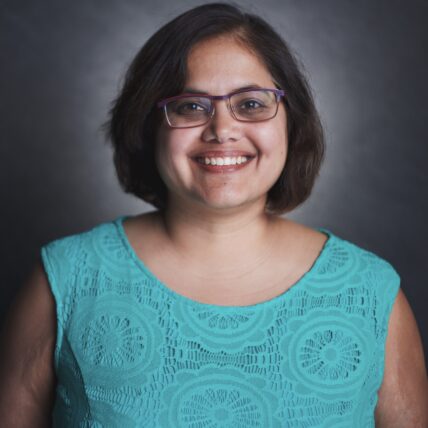
Susan Misra’s life purpose is to work with advocates and activists to actualize their visions and values of justice and equity in their relationships, structures, and work today. She has over 20 years of experience in developing equitable, sustainable organizations and networks for movement building.
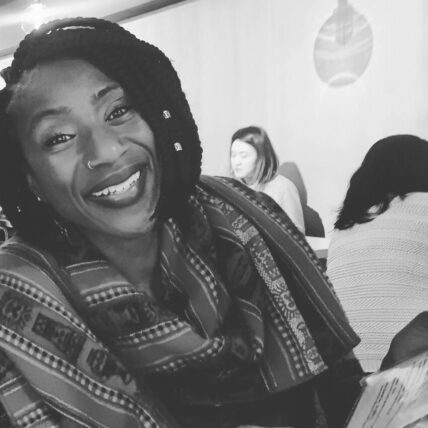
Trish Tchume is the Leadership Program Director for Community Change and comes with almost two decades of experience helping everyday people see their role in the gorgeous project of building a more just and equitable society.
Robin Katcher strengthens organizations, leaders, and networks on the front lines of social change. Her deep experience in social justice movements – as an organizer, educator, legislative advocate, and board member – informs her rigorous approach to building powerful organizations, leaders, and networks.

Natalie Bamdad joined Change Elemental in 2017. She supports Change Elemental consulting engagements through research, analysis, and project management. Her core areas of expertise include strategic planning and program design and implementation.

Natasha Winegar is a researcher, writer, communications specialist, and coach. She joined Change Elemental in 2013, and is our Research & Communications Manager. She collaborates on our consulting, coaching, and learning engagements, bringing a blend of curiosity, imagination, strategic insight, and a commitment to love, dignity, and justice.
Originally published at ChangeElemental.Org
Banner Photo Credit: Cuba Gallery | Flickr
by SUSAN MISRA, TRISH TCHUME, ROBIN KATCHER, NATALIE BAMDAD, NATASHA WINEGAR
SYSTEMS CHANGE & DEEP EQUITY
PATHWAYS TOWARD SUSTAINABLE
IMPACT, BEYOND “EUREKA!,”
UNAWARENESS & UNWITTING HARM
An Interview with Sheryl Petty and Mark Leach
Below is the introduction to the full Systems Change & Deep Equity monograph offered by Sheryl Petty of Movement Tapestries and Mark Leach of Change Elemental.
Available for download here at Network Weaver or directly from Change Elemental’s Website.
Change Elemental chose to offer a monograph to share our thoughts on the inseparability of Systems Change and Deep Equity, given our 40 years as an organization in the systems change, capacity building, and social justice fields. (1) We offer this especially given the proliferation of equity awareness and significantly deeper requests for equity support across the organizational development and movement network fields in the last few years. This expansion in requests for deep, transformational equity support has grown dramatically since the 2016 U.S. presidential election. Now, many more social change organizations and philanthropic institutions are working to deepen their knowledge and capacity around Systems Change and Deep Equity. In our opinion, the combination of these two fields is pivotal and likely the work to do for the next phase of our human evolution if we are to become the societies we hope for in our deepest hearts and visions for just and healthy communities.
The co-authors of this article have 65 years of combined experience in systems change, equity, and organizational transformation. We have worked together on a number of projects for nearly 8 years, sometimes separately and, at times, together in local, national, and international spaces. We have worked across foundations, non-profits, medium-to-large school systems and universities as well as with individuals, institutions, and networks to support leaders, change agents, and groups to deepen their capacity to realize the full potential of their missions and collective dreams. We have observed over the last decade or so in the field of organizational development, the more popular advent of “Systems Change” as a domain of effort that can lead to more comprehensive, lasting, and effective transformation for institutions, communities, neighborhoods, and groups.
Yet, our observation is also that these approaches to “complex systems” are new to some and not so new to others. Here enters “equity.” We have written elsewhere on the dimensions of equity, and refer readers to those pieces. (2) Others of our colleagues have also written extensively across the fields of social justice, organizational transformation, network development, and movement building. (3)
Our purpose in this article is to dispel mythology and to illuminate essential dimensions of approaches to Systems Change intimately connected with Deep Equity. Our perspectives and our experience have shown us that the two are inseparable if they are to be pursued at depth. The degree of healing needed in our world, and in our collective institutions and communities, requires nothing less than depth from us at this time (if less comprehensive approaches were ever appropriate).
We indicate in this monograph what, from our perspective, are the most salient aspects of approaches to Systems Change and Deep Equity combined that can lead and, in our experience, have led to the most profound changes in organizations, local, national, and global communities, networks, and movement building efforts. (We also refer readers to Change Elemental and Building Movement Project’s 2018 webinar on Systems Change and Equity for further grounding in our approaches. (4) )
As we have stated, nothing less than the robustness of complex Systems Change approaches are necessary to solve some of the most intractable situations we are and have been facing for quite some time—socially, environmentally, and economically, in terms of the overall health and well-being of individuals and communities, nationally and globally. We have grown as a species in our ability to be aware of the interconnectedness between so many of our issues and circumstances; this insight is a gift. We are now challenged to take that growth and insight, and apply it at depth with particular attention to our areas of unawareness—i.e., the places we have been ignoring for centuries. It is to these areas that Deep Equity speaks. In fact, Deep Equity, by its very nature, is complex Systems Change.
To put a finer point on these statements: Systems Change pursued without Deep Equity is, in our experience, dangerous and can cause harm, and in fact leaves some of the critical elements of systems unchanged. And “equity” pursued without “Systems Change” is not “deep” nor comprehensive at the level of effectiveness currently needed.
Both need each other. The challenge in effectively combining these domains of practice is that often many systems change actors—particularly those with access to publishing, funding, and other critical resources to achieve depth and scale—do not seem to understand nor are they embedding Deep Equity into their work. Or when “equity” is addressed, it is piecemeal, seems an afterthought, and/or is shallow. Actors pursuing and advancing critically needed systems change efforts often bring limited awareness to address or adequately embed equity. This is the wound we must heal.
We have observed too many times systems change efforts pursued to the neglect of equity, or Deep Equity, despite living in a period where information about equity (and Deep Equity, in particular) is proliferating at an unprecedented rate. Gone are the times when any of us could say, “I couldn’t find any information on it,” “I didn’t know anyone,” or “I didn’t know better.”
We owe it to ourselves and to each other to confront our old habits that are preventing us from creating the most robust, healing, catalytic, life-affirming, and transformative solutions we can develop, and that are desperately needed. Pursuing Deep Equity and Systems Change will require us to squarely address issues of power, privilege, places of unawareness, and the meaning of “depth” in approaches to equity and systems change. It will take bravery and courage, finding out how deep we are really willing to go to help heal and transform this world, committing to the depth that we discover in our exploration, and partnering and complementing each other in ways that may be heretofore unprecedented. (5) (We also refer the reader to a previously published piece from one of the authors on the relationship between these two themes plus “inner work:” “Waking Up To All of Ourselves: Inner Work, Social Justice & Systems Change.” (6) )
This monograph is structured as an interview of Sheryl Petty conducted by Mark Leach, but it is ultimately a dialogue between two long-term Systems Change and Equity actors.
One of us is a soon-to-be middle-aged cisgendered, (7) queer/pansexual, Black woman from Detroit, whose professional career in social justice and Systems Change began in Oakland, CA in educational systems and nonprofits, and branched out into capacity building and systems change with school systems, nonprofits, and philanthropic institutions around the country over the last 25 years. She also has a nearly 25-year inner work practice in African-based and Tibetan Buddhist traditions, in both of which she is ordained and teaches.
The other of us is a well-past middle-aged, cisgendered, white man from Long Island, New York. Based on early experiences in some of the world’s most economically poor countries, he has spent his life trying to understand who gets what, and why, and working with people, organizations, and networks across big differences in identity, wealth, and worldview to tackle big, messy problems of systemic inequity.
Systems Change & Deep Equity is available for download here at Network Weaver or directly from Change Elemental’s Website.
1. Change Elemental was formerly known as Management Assistance Group (MAG). We changed our name in April 2019.
2. For example: Petty, Sheryl. Seeing, Reckoning and Acting: A Practice Toward Deep Equity. Change Elemental, 2016. https://changeelemental.org/resources/seeing-reckoning-acting-a-practice-toward-deep-equity/ ; and Petty, Sheryl and Amy B. Dean. Pursuing Deep Equity. Nonprofit Quarterly, 2017. https://nonprofitquarterly.org/five-elements-of-a-thriving-justice-ecosystem-pursuing-deep-equity/
3. Please see more resources listed in the appendix.
4. Systems Change with an Equity Lens: Community Interventions that Shift Power and Center Race. Change Elemental and Building Movement Project, 2018. https://changeelemental.org/resources/systems-change-with-an-equity-lens-community-interventions-that-shift-power-and-center-race/
5. Petty, Sheryl. “Introduction.” Equity-Centered Capacity Building: Essential Approaches for Excellence and Sustainable School System Transformation. Equity-Centered Capacity Building Network (ECCBN), 2016. https://capacitybuildingnetwork.org/intro/
6. Petty, Sheryl. “Waking Up All Of Ourselves: Inner Work, Social Justice, & Systems Change.” Initiative for Contemplation, Equity, and Action Journal. Vol. 1, No. 1, pages 1-14, 2017. http://www.contemplativemind.org/files/ICEA_vol1_2017.pdf
7. Cisgender is a term used to describe people who identify with the gender assigned them at birth. Source: Words Matter: Gender Justice Toolkit. National Black Justice Coalition. https://www.arcusfoundation.
Featured Photo by Jaccob McKay on Unsplash

